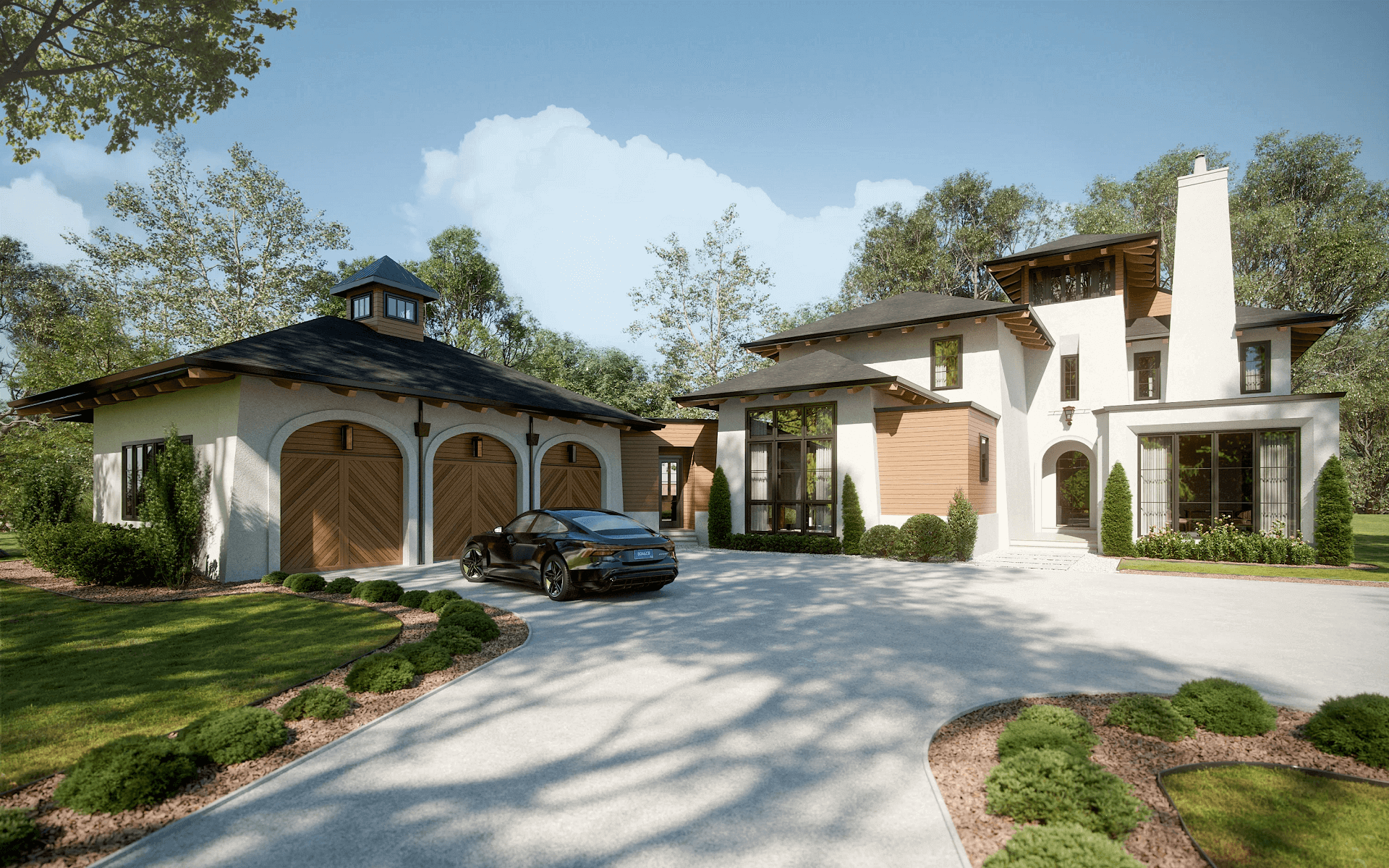Designing and marketing residential properties requires not only talent and experience but also impactful visuals. To get those, the AEC industry professionals use various types of residential CGI. This tool helps them communicate design concepts clearly and enhance their marketing. There are different residential 3D rendering types to cover all their needs. So, what are those, and which ones to choose?
At our architectural visualization company, creating 3D renderings for residential projects is our main job. So we can speak from experience. In this article, you’ll discover ten types of residential 3D rendering and learn how they can benefit you as an architect, designer, or real estate professional. Let’s dive in!
#1. Exterior 3D Rendering
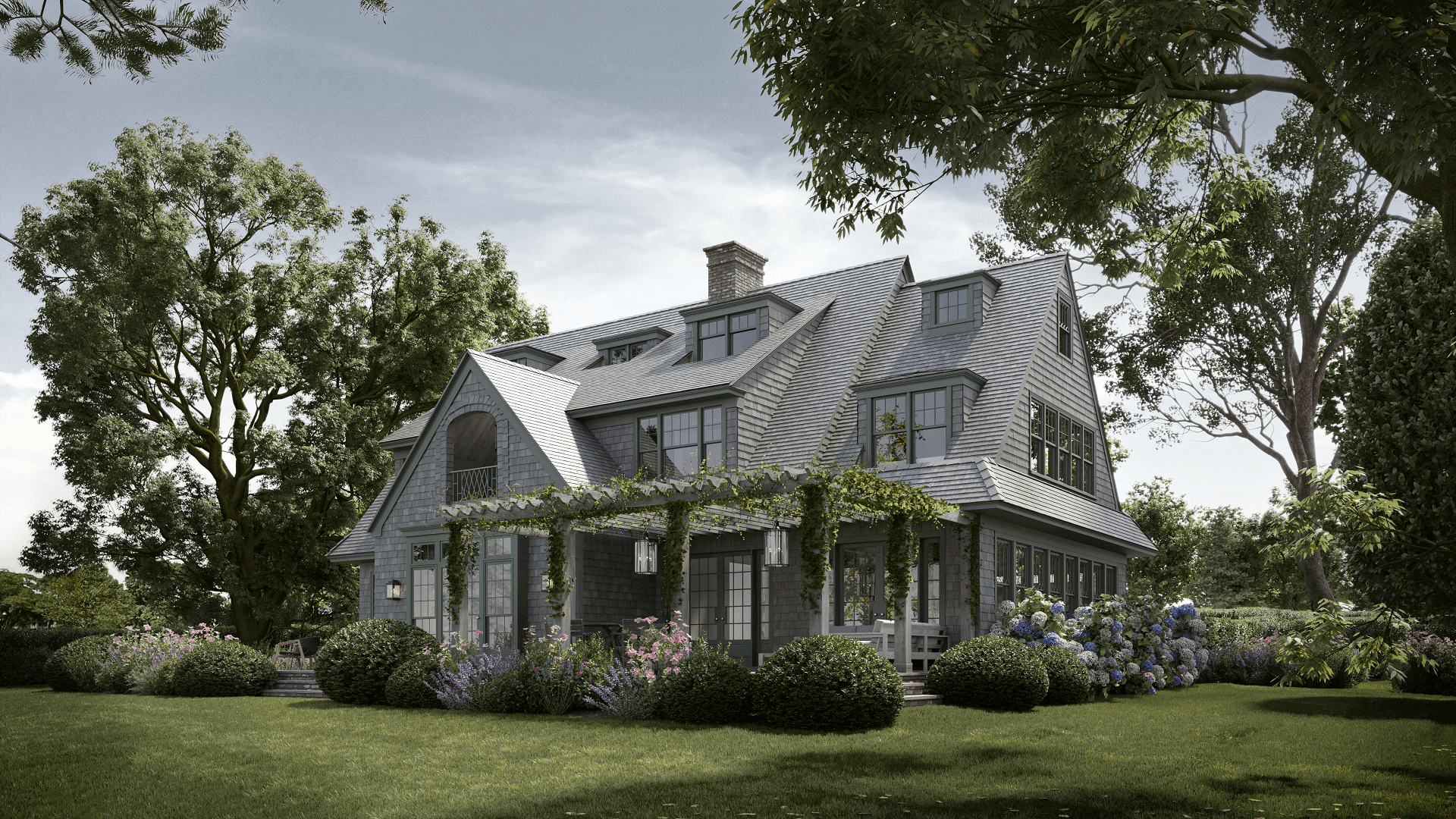
Exterior renderings present how a building looks on the outside. They can show its architectural style, materials, and surrounding landscape. Whether it’s a sleek modern villa or a cozy countryside home, these renderings help potential homeowners visualize the structure in its setting. They can highlight specific features or outdoor amenities such as lush gardens and swimming pools, adding lifestyle appeal. Exterior 3D visualizations are perfect for showcasing the building from every angle, from the front view to the backyard. Additionally, a 3D architectural exterior rendering can present a project in any weather, season, and time of the day.
#2. Interior 3D Rendering
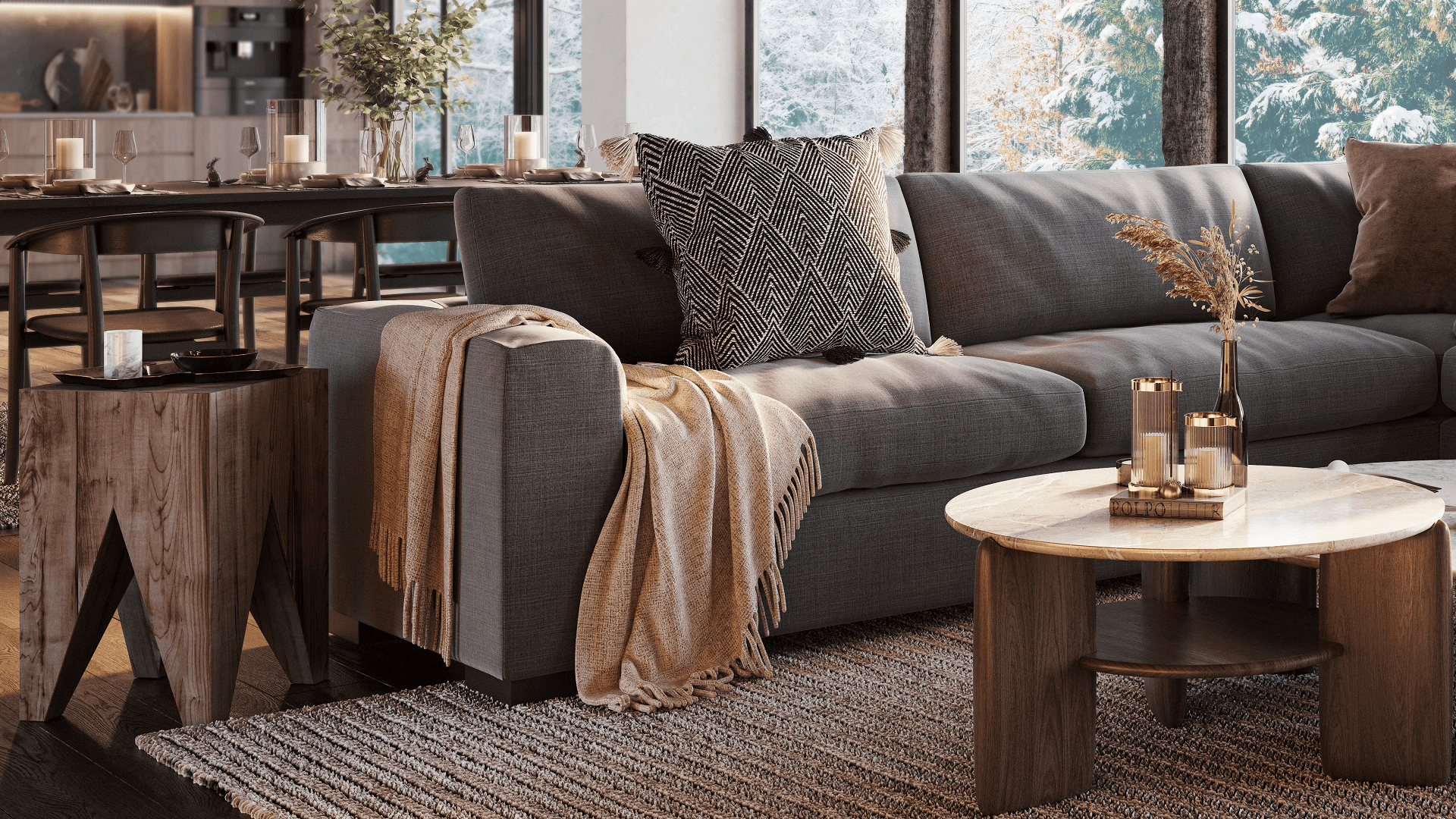
Residential interior 3D renderings focus on rooms’ layouts, furniture, lighting, and decor. This type of visualization is perfect for showcasing comfort and functionality in a home. An interior rendering can highlight key design elements such as custom cabinetry, high-end materials, or other unique details that set the space apart.
3D interior design rendering services also allow you to experiment with different color schemes, furniture arrangements, and lighting scenarios, giving clients a comprehensive view of the design’s potential. When done right, a residential 3D rendering can evoke emotions by showcasing inviting, relatable spaces. It allows viewers to picture themselves living in the space.
#3. 3D Floor Plans
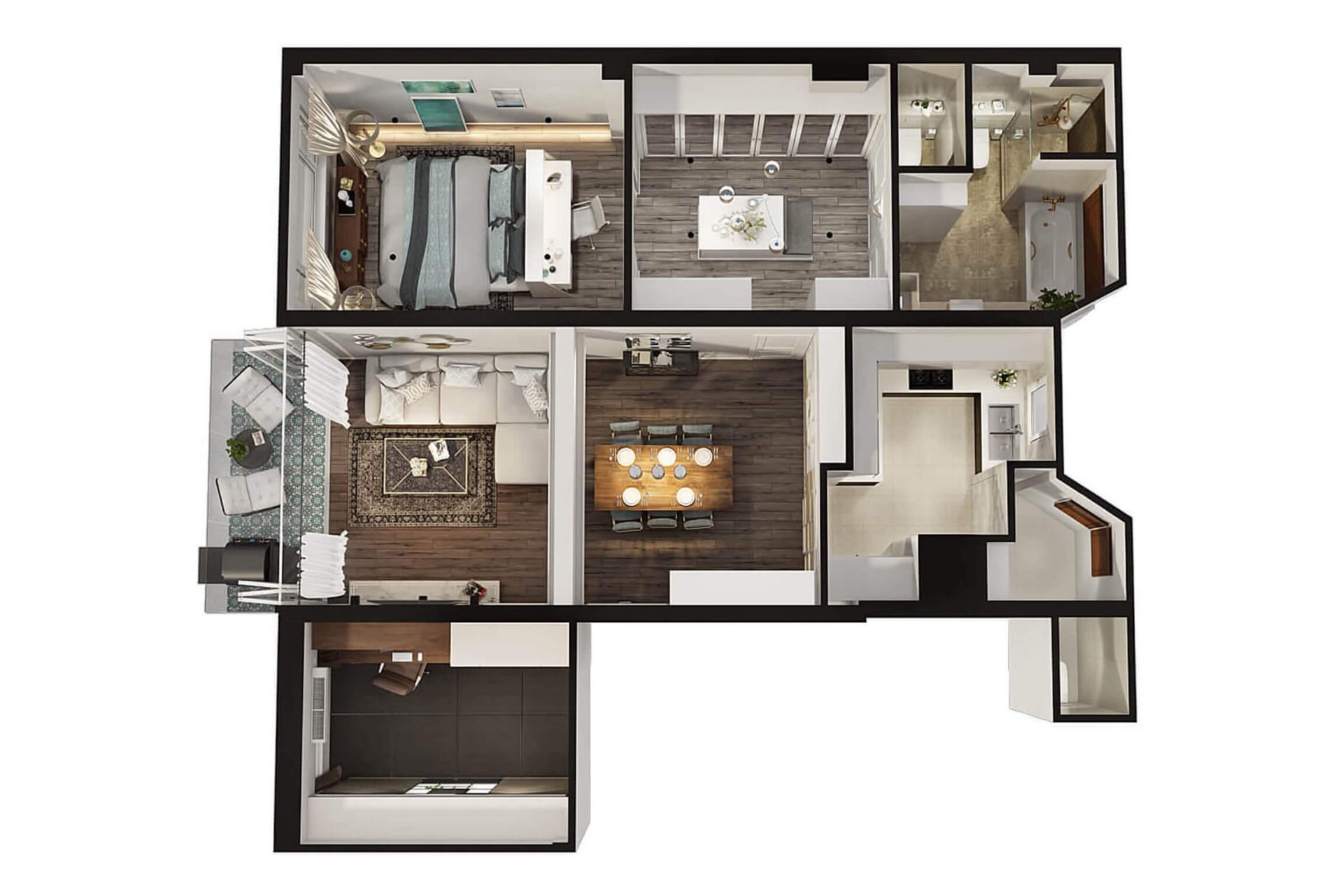
3D floor plans present an elevated view of a property in section (without ceiling) so the viewer can see what’s inside. These visuals make it easy for clients to understand room layouts and dimensions. This is especially useful when you need to win the attention of potential home buyers who would be confused by the regular black-and-white drawings. As a bonus, 3D floor plan rendering services can help you demonstrate interiors in photoreal quality, which adds value to a presentation.
#4. Architectural 3D Animation
Architectural 3D animation allows viewers to experience a building as if they were moving through it. It showcases the flow and functionality of the design. This dynamic visualization is effective for getting design approvals, real estate marketing, and pitching to investors, as it brings projects to life in a compelling way.
There are various types of architectural 3D animation services, such as CG room tours that highlight interior layouts and decor, or aerial animations that present the structure in the context of its surroundings. For example, an aerial animation can emphasize proximity to key landmarks, while a room tour can showcase luxurious interiors with stunning transitions.
#5. Virtual 3D Tours
Virtual tours are interactive experiences that allow users to explore properties at their own pace. With a web browser or VR headset, potential buyers can walk through rooms and examine details up close.
Such interactive virtual tour 3D rendering can showcase various types of properties in an exceptionally engaging way. It is fair to say that listings with tours always stand out. Actually, 54% of buyers say they won’t even consider a property without a 3D tour. hat’s because virtual tours take user experience to the next level, allowing people to interact with their future homes.
#6. CGI Combined with Real-Life Footage
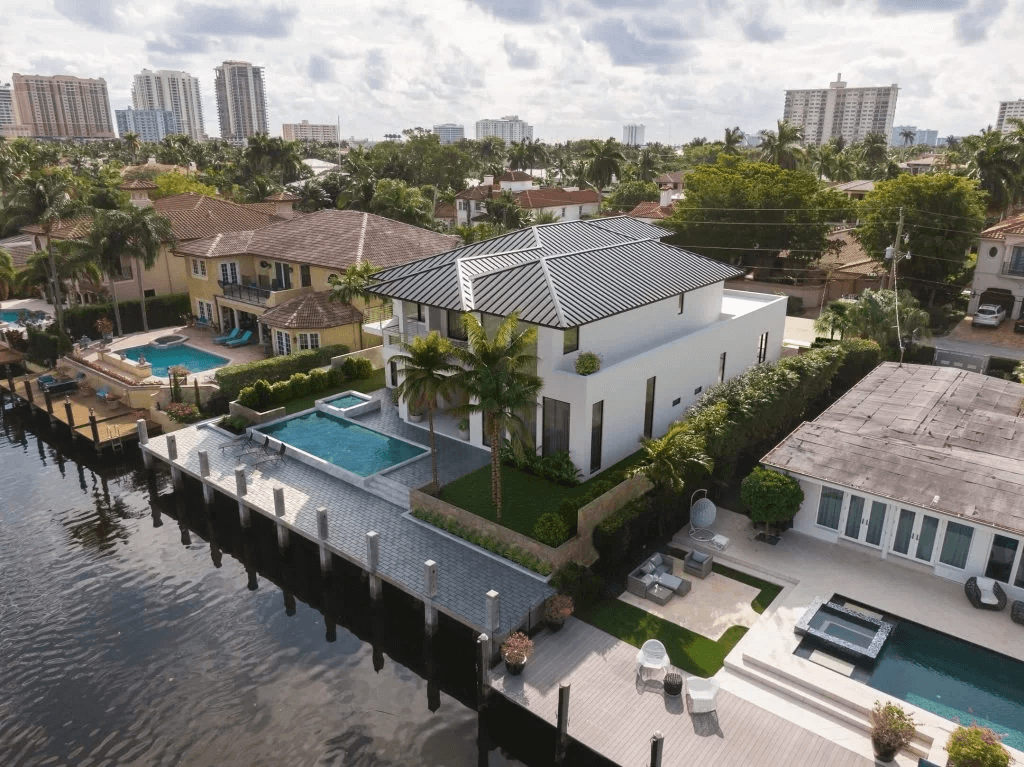
These residential 3D rendering types merge the real and digital worlds. How does this work? A 3D artist takes drone footage of the location and seamlessly blends it with a computer-generated model of the future house. This way, you get highly realistic and accurate images or animations. They are perfect for real estate presentations, design approvals, and marketing campaigns.
Since most of such a rendering consists of drone footage, the visuals appear natural and ultra-realistic. Furthermore, this method is time- and cost-effective as it eliminates the need to create large-scale 3D environments from scratch.
#7. Immersive Tours
An immersive tour is the most cutting-edge residential 3D rendering presentation type. Based on Unreal Engine, it offers developers a previously unseen level of interactivity and immersion. This is a completely new way to explore a yet-to-be-built property.
Immersive tours showcase everything from the neighborhood to the smallest interior details. Starting with an aerial view, users can take in the surroundings of the property, including nearby landmarks, landscaping, and infrastructure. From there, they can go closer to see the exterior, examining architectural details and outdoor features. Then, they can step inside to explore the interiors.
These tours allow users to control the lighting and atmosphere, experiencing the property in different conditions—be it a sunny morning or a rainy evening. By walking through the space, clients get a comprehensive understanding of the design, layout, and finishes. Such types of experiences provide you with the most powerful tool for showcasing your projects in a lifelike and interactive way. Immersive tours can be viewed via browsers or VR headsets.
#8. Dollhouse Rendering
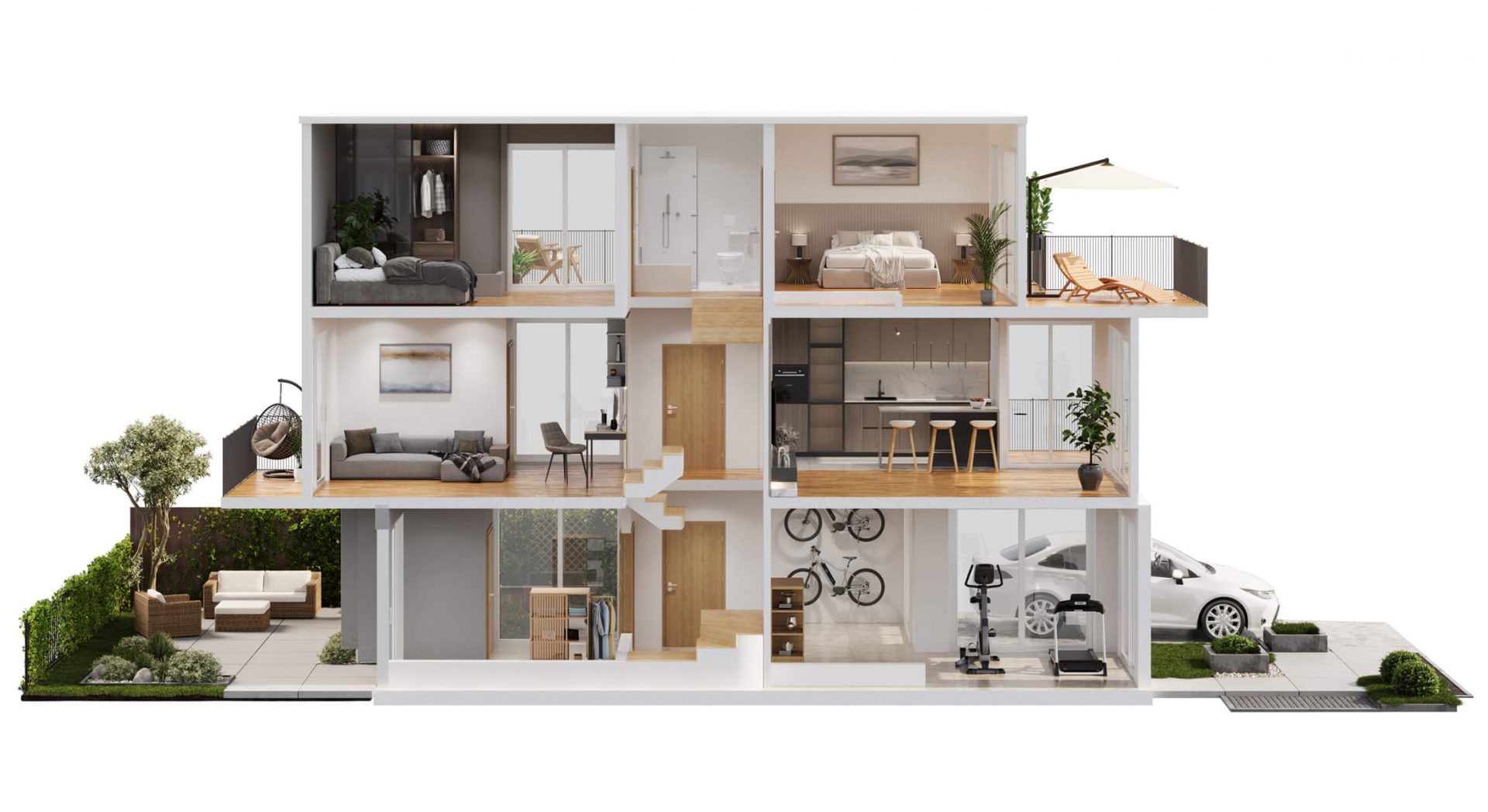
Dollhouse real estate 3D visualization stands out among the other residential 3D rendering types for its unusual look. It provides a sectional perspective (without one of the walls), in line with its name. Dollhouse CGI allows the viewers to examine the layout of every room while also seeing the building’s surroundings. It showcases properties in a way that is both engaging and informative.
Perfect for stakeholder communication, these types of renders help clarify complex designs and ensure everyone involved has a clear vision of the project. Additionally, dollhouse renderings are real scroll-stoppers. Their visually striking format easily grabs the attention of potential buyers or tenants. This makes them perfect for real estate marketing.
#9. Cinemagraph
A 3D cinemagraph combines still imagery and animated visual effects, making it an attractive and versatile tool. Standing out among other CGI types, this one allows you to highlight key design features in a dynamic way. Cinemagraphs are invaluable for adding aesthetic appeal to marketing visuals.
You can use different types of subtle movements in a CG image to guide the viewer’s eye. Details like flickering lights or rippling water will evoke emotions and captivate viewers. Such residential renderings are perfect for presentations and social media.
#10. Virtual staging
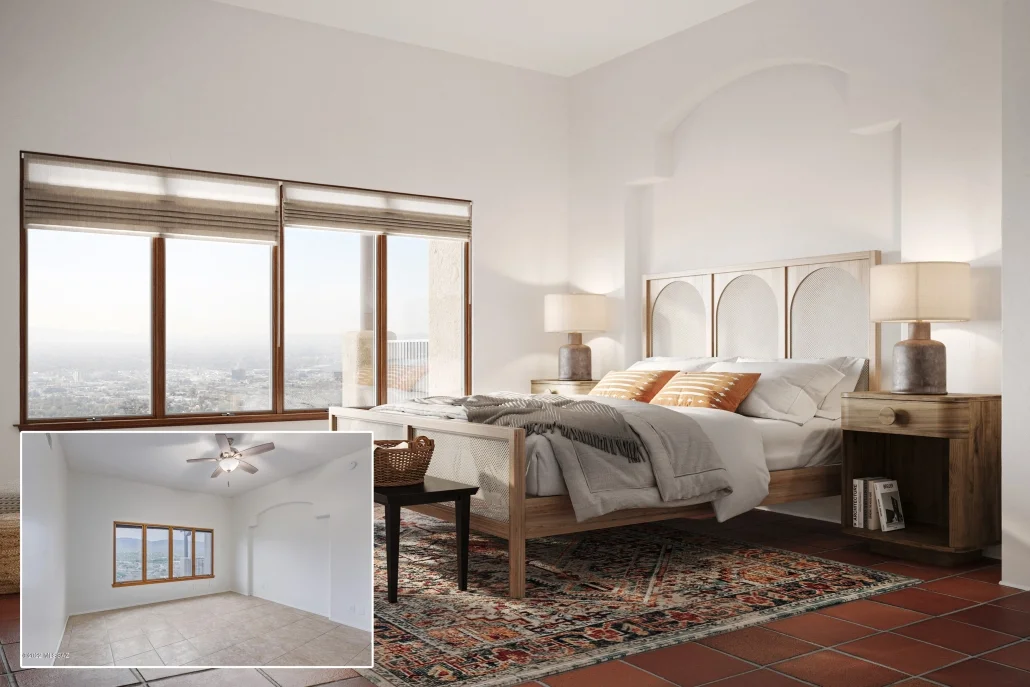
These types of visuals allow you to digitally furnish empty rooms, transforming photos of bare spaces into images of inviting and livable homes. This CG solution eliminates the need for physical staging, saving time and resources for realtors. By customizing furniture and decor to match a property’s style and target audience, it enhances its appeal to potential buyers or tenants.
The tool is not only cost-effective but also highly flexible. It allows easy updates to suit changing marketing needs. Virtual staging is ideal for showcasing a property’s potential, whether it’s a sleek city apartment or a cozy family home. Such a rendering for real estate accelerates the sales process by presenting polished, photorealistic visuals that help clients envision the space as their future home.
Schedule a free demo of 3D solutions for your business
All residential 3D rendering types serve their unique purposes, allowing you to showcase your project in the best light. They can help you convey both the practical and aesthetic appeal of a property in different ways. Combining multiple CGI types can cover everything from stakeholder presentations to concept approvals to marketing campaigns.
Looking for expert CGI services for your residential projects? Get in touch with ArchiCGI today and let us transform your concepts into breathtaking visuals!

Stacey Mur
Content Writer, Copywriter
Stacey is a content writer and a CG artist. Outside of work, Stacey enjoys musicals, Star Wars, and art talk. A proud Corgi parent.


